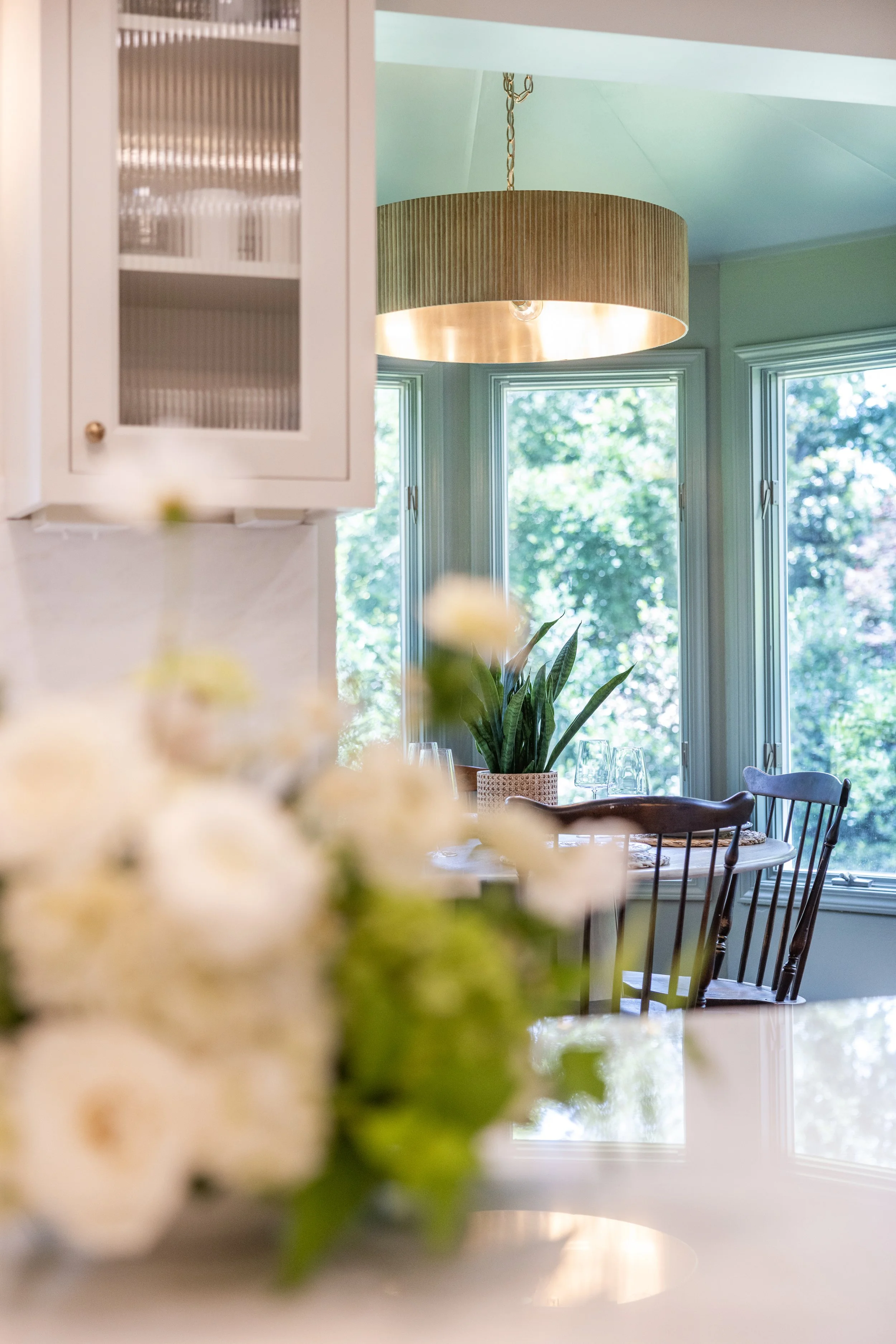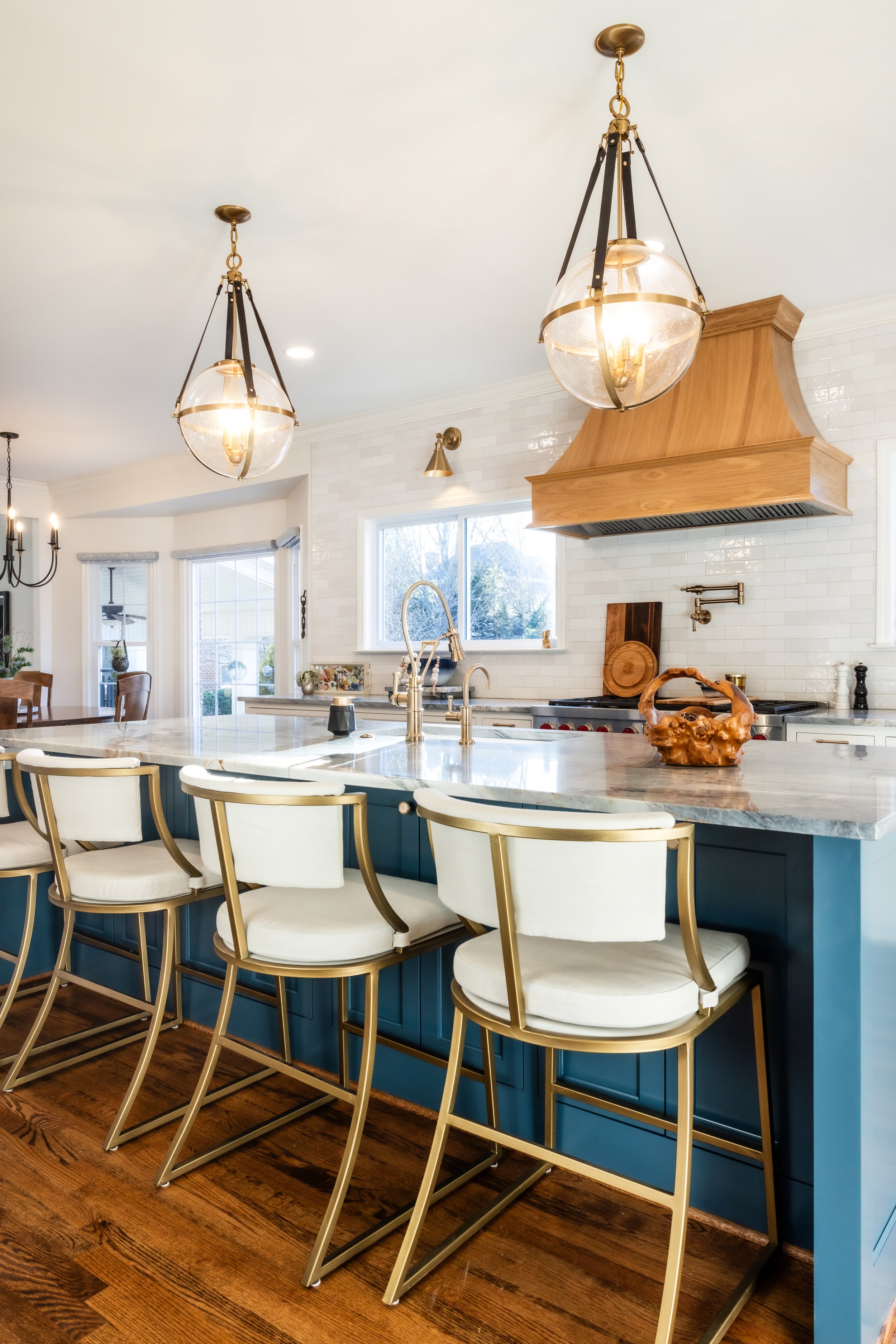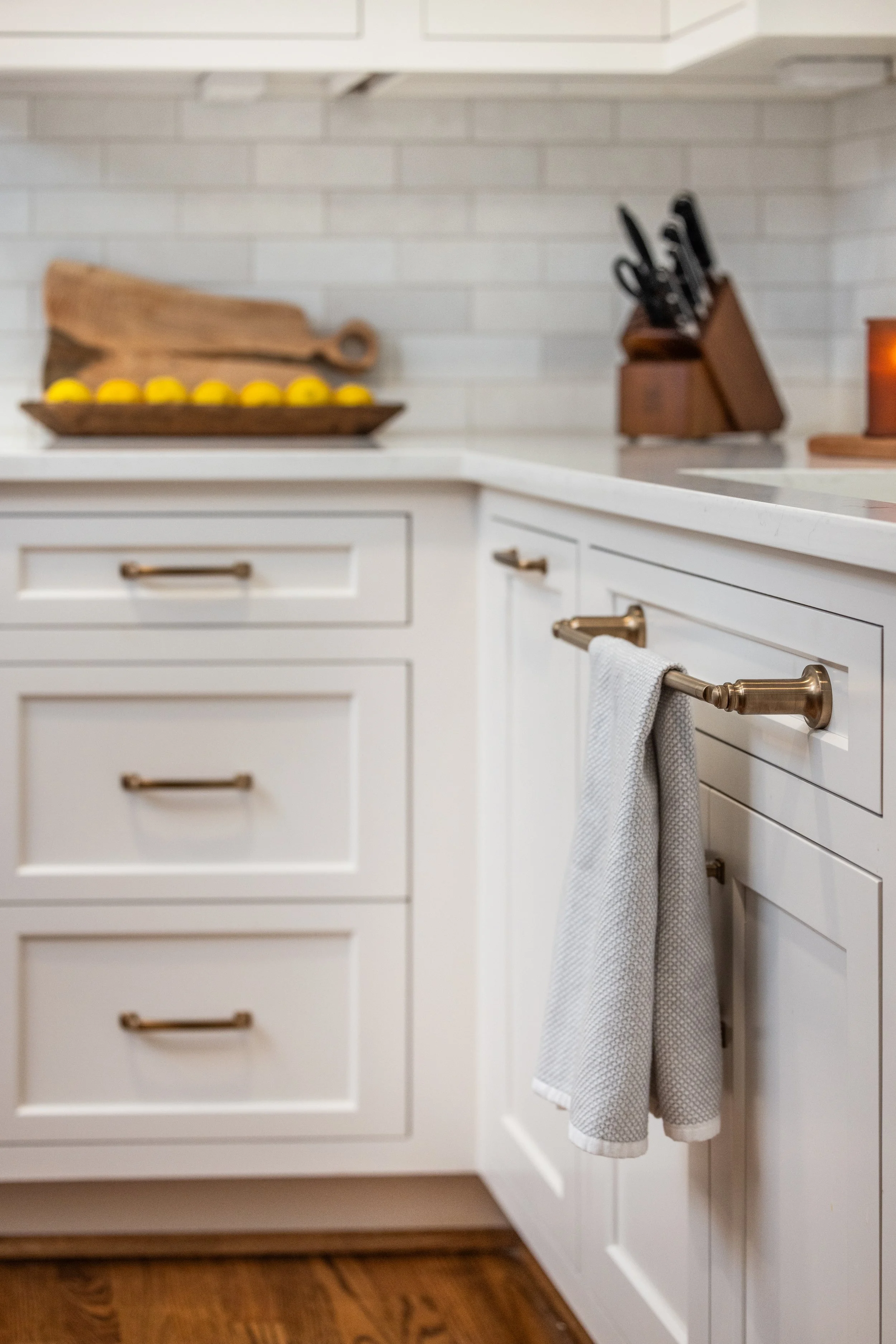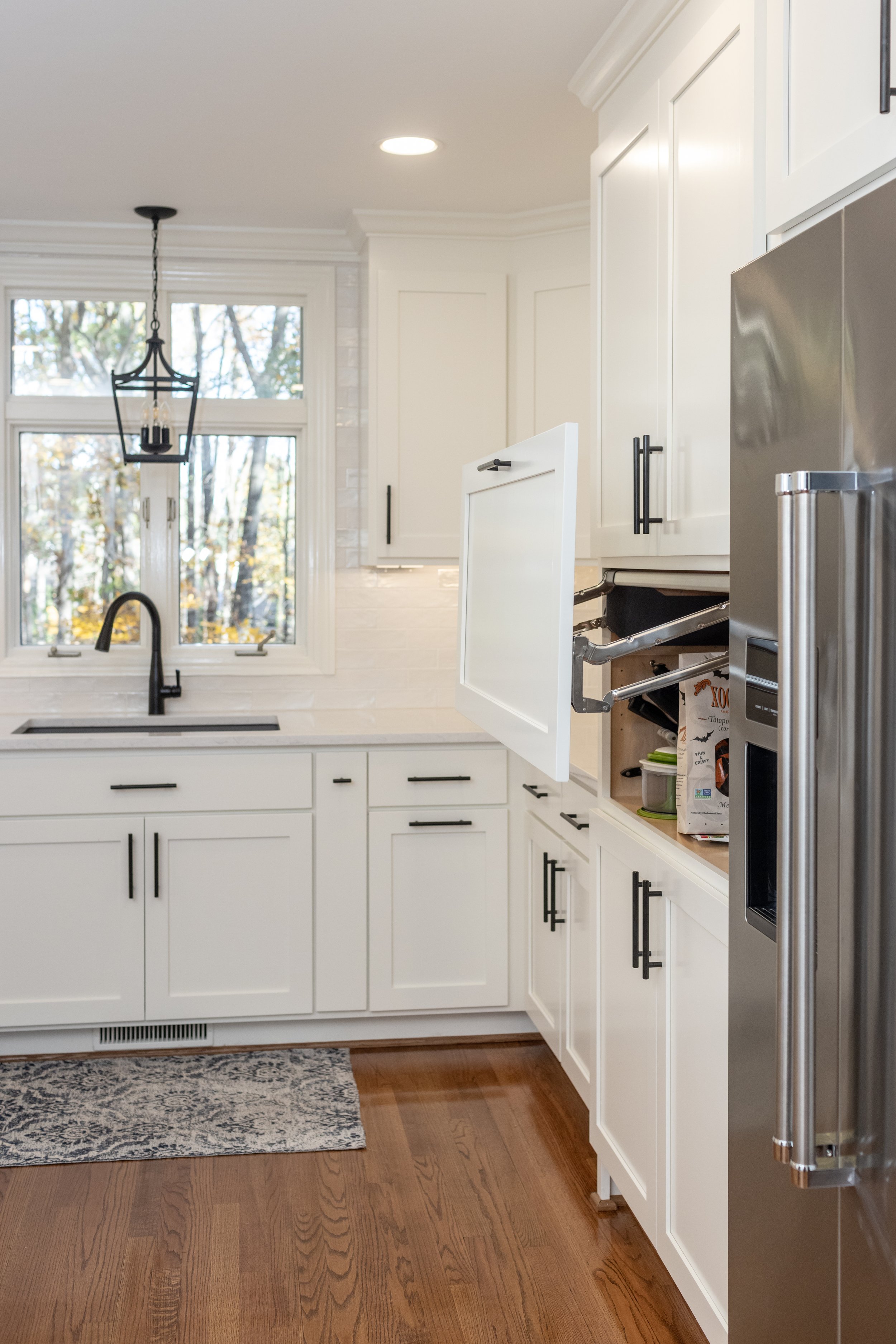Paint Grade vs. Stain Grade Cabinetry: Which One is Right for You?
When planning a kitchen or bathroom renovation, one of the most important decisions you'll face is choosing the cabinetry. Cabinets play a critical role in defining the style and functionality of a space, and the finish—whether paint grade or stain grade—can dramatically influence the final look. Understanding the differences between these two options is essential to make an informed decision that aligns with your design goals and budget.
White oak and cabinets combine to create a classic, earthy kitchen remodel
What is Paint Grade Cabinetry?
Paint grade cabinetry refers to cabinets made from materials best suited for a smooth painted finish. Typically, paint-grade cabinets are constructed using woods with minimal grain patterns, such as maple, birch, or medium-density fiberboard (MDF). These materials create a uniform surface that can be painted in virtually any color, making them a versatile option for a wide range of styles, from modern to traditional.
Pros of Paint Grade Cabinetry:
Customizable Colors: Paint offers endless color options, allowing you to match any design theme.
Smooth Finish: The lack of visible grain provides a clean, polished look.
Cost-Effective Materials: MDF and other paint-grade woods are often less expensive than solid hardwoods.
Cons of Paint Grade Cabinetry:
Durability Concerns: Painted surfaces can be prone to chipping and scratching over time.
Limited Natural Appeal: If you love the organic look of wood grain, painted cabinets won’t offer that.
What is Stain Grade Cabinetry?
Stain grade cabinetry is made from high-quality, solid hardwoods with distinctive grain patterns that are enhanced by stains. Common woods used for stain grade cabinets include oak, cherry, walnut, and hickory. Stains range from light finishes that highlight the wood’s natural beauty to darker tones that add richness and depth.
Pros of Stain Grade Cabinetry:
Natural Beauty: The wood grain becomes a design feature, adding warmth and character to your space.
Durability: Stained finishes are generally more resistant to wear and tear than paint.
Timeless Appeal: Stain grade cabinets often have a classic look that doesn’t go out of style.
Cons of Stain Grade Cabinetry:
Higher Cost: The use of premium hardwoods increases the price.
Color Limitations: While stains come in a variety of tones, they don’t offer the same flexibility as paint.
Choosing the Right Option for Your Home
The choice between paint grade and stain grade cabinetry often comes down to personal preference, budget, and the overall design aesthetic you’re trying to achieve. Here are some considerations:
Design Style: If you prefer a modern or contemporary look, paint grade cabinetry is an excellent choice due to its sleek and versatile appearance. For a more traditional or rustic vibe, stain grade cabinetry’s natural warmth may be the better fit.
Budget: If you’re working with a tight budget, paint grade cabinetry can be a more affordable option, especially if MDF is used.
Durability Needs: Homes with young children or high-traffic kitchens may benefit from the durability of stain grade finishes.
Longevity: If you’re looking for a timeless option that won’t feel dated in a few years, the natural beauty of stain grade cabinetry can stand the test of time
Olive and White Oak Kitchen and Living Room Remodel
Both paint grade and stain grade cabinetry have unique advantages and drawbacks, making it essential to weigh your priorities. Whether you’re drawn to the bold versatility of paint or the classic charm of stain, selecting the right cabinetry will set the tone for your renovation and ensure a space that you’ll love for years to come. Ready to take the leap with your home renovation? Contact us today to set up your free, initial consultation.
Selections
Green cabinets are painted Retreat by Sherwin Williams (SW 6207). Walls and hood is painted Snowbound SW 7004.
5x5 square tile purchased through Clayton Tile.
Cambria quartz countertops sourced from Upstate Granite Solutions.
Cabinet pulls, latches, and knobs by Signature Hardware.
Interior photography by Kim DeLoach.





















































